Quick: picture a prominent Rickenbacker 12-string player from the 1960s with their guitar. Got it? Odds are you pictured George Harrison hitting that first chord to “A Hard Day’s Night” on a 360/12 or Roger McGuinn fingerpicking his way through “Turn, Turn, Turn” on a 370/12. But for a handful of you—myself included—it’s Pete Townshend brandishing a Rose Morrris 1993 like a weapon.
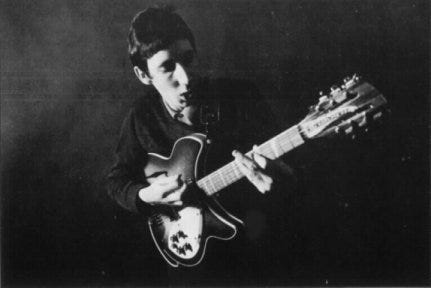
“That’s not a 1993!”, you say. “It has triangle inlays!” Well, you’re partially right. It’s the sample/protype 1993—effectively a 360/12 like Harrison’s, but with an f-hole—and it would be the first of several 1993s for Townshend. They can be heard across The Who’s earliest records—most notably “I Can’t Explain”, the band’s first single. As for what happened to those guitars, well, you know the answer to that.
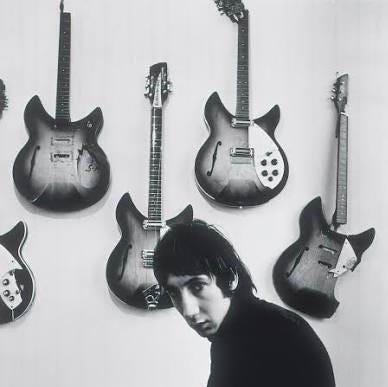
(Here’s a fun little story about one of Townshend’s surviving 1993s: it was purchased in 1968 by English journeyman musician Paul Griggs who loaned it to Yes’s Steve Howe who would play it on “Starship Troopers” on “The Yes Album”!)
Why all the focus on Pete Townshend? We’ll come back to that in a minute. But first a quick word about the original 1993. Developed with and for Rose Morris and produced from 1964 to 1965, the original version (internal designation 330S/12) featured a bound body with an unbound neck, dot markers, two pickups, a trapeze tailpiece on early examples and an “R” tailpiece on later ones, and of course the Rose Morris f-hole.

With only 100 produced (and at least a few of them meeting an untimely end!), an original 1993 is a rare and valuable beast today. Near the top of the “reissue wish list” for many, none has been forthcoming, apart from a special order of 12 by Sam Ash in 1987 and a handful of one-offs. None were “exact” reproductions.
Which brings us to the 1993Plus. We’re not 100% sure of ALL of the details around its birth, but here’s the gist of it. While Townshend has only used a Rickenbacker 12-string on stage very sporadically since the mid 1960s, he has apparently always retained a soft spot for those early 1993s. And so this guitar was developed in 2014 by John Hall and Alan Rogan, Townshend’s long-time guitar tech and also a 1993 fan, to meet Townshend’s specifications and deliver him the 1993 of his dreams.
Which is why it isn’t a proper 1993 reissue. It has three significant differences from the original 1993, all tailored to Townshend’s preferences. So let’s talk about how it’s put together and what is unique about it.
For starters, the body uses the same template as the 360/12C63 with its binding and x-bracing, although instead of the standard cat’s eye/slash soundhole we obviously have the Rose Morris f-hole. Hardware and plastics are also the same as the 360/12C63 with two exceptions. First, because the 1993Plus is not classified as a vintage or reissue model it has modern Schaller style strap locks instead of the vintage reeded edge strap buttons. And second, “Townshend spec No. 1” calls for three pickups instead of two.
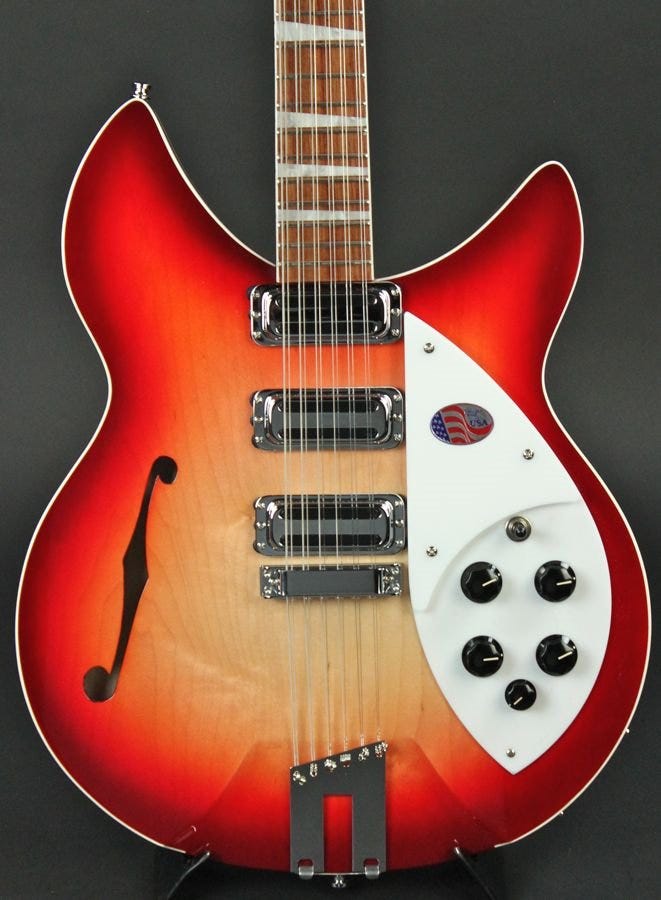
Why? Because Townshend’s first and favorite Rose Morris 6-string model back in the day—the one his 1987 Signature Limited Edition model was based on—was the three pickup 1998. It is said he bought one of the first five to arrive in the UK in 1964–and several more followed. Funnily enough, one of the rejected Rose Morris designs was a three pickup 12-string that would have been designated the 1994. Seems like a lost opportunity here!

The next Townshend spec was the bound neck and triangle inlays that his first “1993” had sported. I put 1993 in quotes as the official factory designation for that particular guitar—the only one of its type—was a 360/12 Export. It was sent to Rose Morris in early 1964 for approval as the upcoming 1993, but Rose Morris axed the inlays and neck binding to help keep the cost down. The guitar ended up on the wall at Jim Marshall’s shop where Townshend bought it—his first 12-string—in mid 1964 on an installment plan. Sadly that one of a kind guitar can be spotted on the far left side of the photo of destroyed Rickenbackers above.
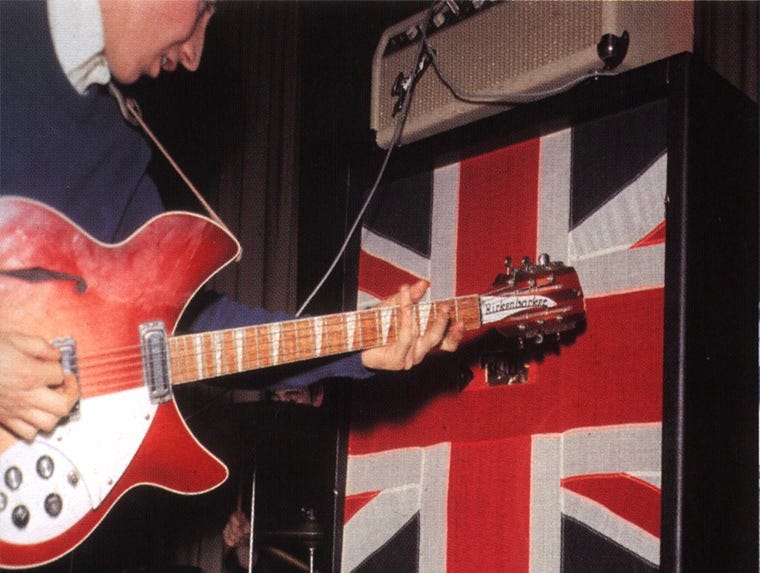
The final Townshend spec was the neck itself. Plenty of people have complained about the narrow neck on a Rickenbacker 12-string over the years, and apparently Townshend was one of them. So the 1/8” wider neck found on the 660/12 (and introduced on the Tom Petty Signaure Limited Edition 660/12TP) was added to the mix. This neck also features a more modern 10” fingerboard radius as compared to the 360/12C63’s vintage 7.25”And so was born the 1993Plus.
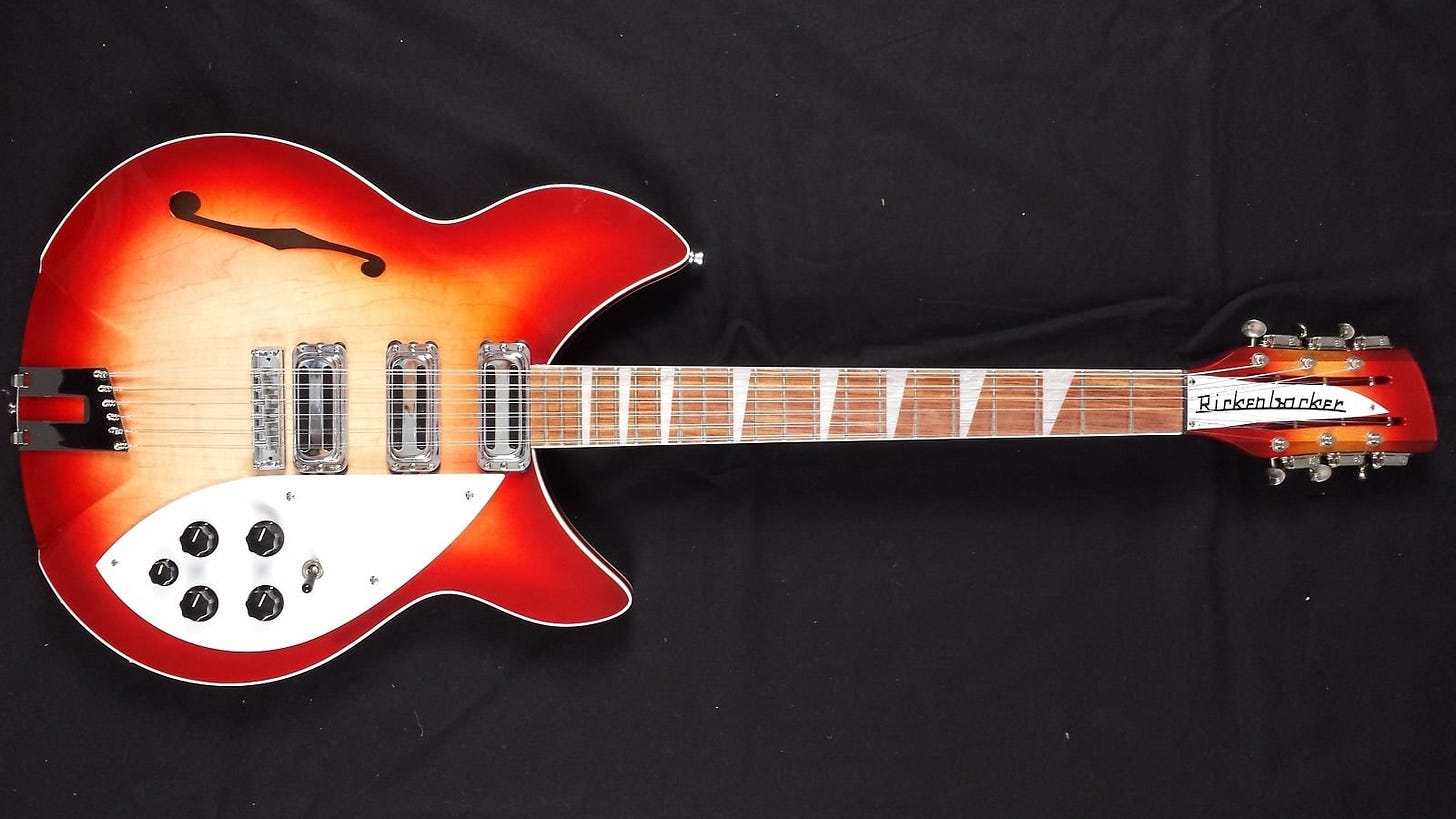
Fun fact: the 1993Plus is the only full-scale semi-hollowbody guitar in the line to feature a two piece maple neck (like the 660/12) instead of a 3 piece maple/walnut/maple neck.
The guitar was introduced in 2015, and at first it kinda confused people. Many diehards were disappointed it wasn’t a “proper” 1993 reissue, and the wider neck turned off traditionalists. But it still looked good, and as people came to understand what it was it filled a “vintage looks with modern details” hole in the lineup. So much so that the 1993Plus has gone on to outsell both the 330/12 and 360/12C63 over the ten years since its launch.
There have been no changes of note to the 1993Plus since its launch. The maker of the “Ric Deluxe” Kluson style tuners has changed a couple times, but that’s about it. If it ain’t broke, don’t fix it! There was a “Santa Ana Skyglo” special run in 2016, and a few special one-offs like a purple one for Little Steven van Zandt, but for the most part the model just keeps quietly chugging along.

As far as the man the guitar was designed for, his signature Fender Stratocaster is still his live go-to but when The Who digs deep in the back catalog for songs like “Anyway, Anyhow, Anywhere” that featured a 1993, there’s a 1993Plus in the rack for that!

Want to learn more about…everything else? Check out the rickenbacker101 site map and see what’s already been covered! Have a suggestion about what we should tackle next? Drop it in the comments and we’ll add it to the queue.


Great article Andy!! The WHO have been my favorite band since they hit the airwaves and I'm pretty close to Pete's age!! We all had to have a RIC-12 after seeing Pete with one (and later Jim McGuinn). I got a 1993+ when it first came out and it is great sounding plugged in or "acoustic". Love the build and wider neck. The TP-12 is also on my favorites list. Thanks for the article and great history. This is a superb addition to the RIC line.
Hi Andy, Another great, very thorough article! It's difficult to believe that the neck width is only 1/8" wider than a standard 360 neck - it feels much wider. Sad that Pete trashed so many, but it was part of the act.... It's not difficult to believe that the 1993 Plus is outselling the 360/12 models, just for comfort alone. I had to sell a V64/12 and two 360WB/12's because of finger crowding in the 1st position, so the 1993Plus is a very welcomed gift for Rick 12 players. PS - I'm one of the fortunate 7 with a Santa Ana SkyGlo. It's magnificent. Looking forward to the next outstanding article! Bob